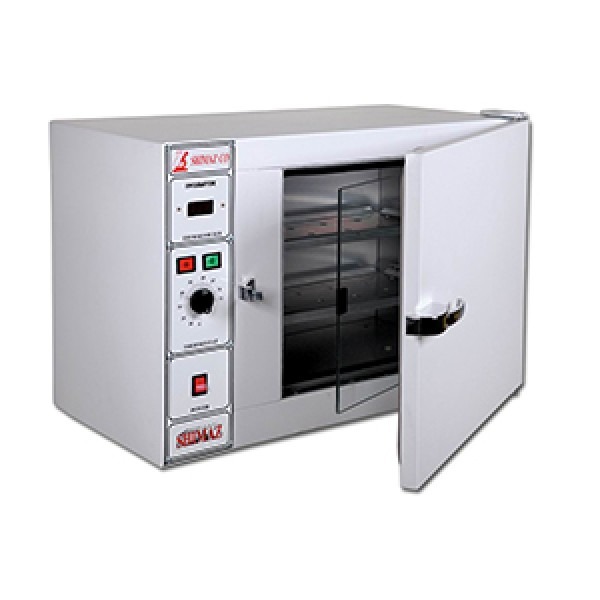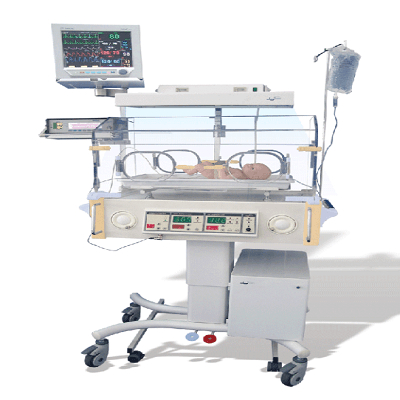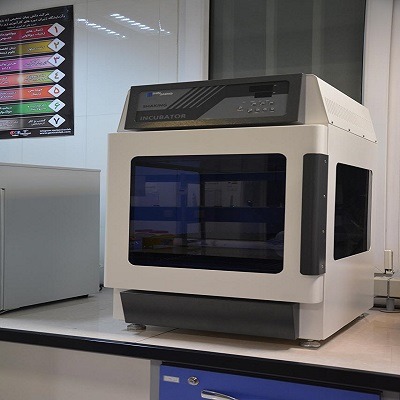انکـــوباتور
انکوباتور یک محیط بسته ای است که در آن دما و رطوبت کنترل می شود و جهت نگهداری نوزادان استفاده
می شود. برای مراقبت از نوزادان نارس لازم است که آن ها را در محیطی با دمای مناسب و کنترل شده
نگهداری کنند زیرا خود آنها قادر به تنظیم دمای بدنشان نیستند.
انکوباتورهای معمولی نوزاد و نوع سیار آن به نوزاد کمک می کنند تا دمای عادی بدن خور را حفظ کند و غالباً “
برای زنده ماندن نوزاد ضروری و حیاتی هستند. اکثر انکوباتورهارا با یک جریان تحت فشار یا طبیعی از هوای
گرم ، گرم نگاه می دارند. برخی از آن ها از طریق گرم کردن فعال دیواره های خود جهت جلوگیری از افت گرما
از طریق تشعشع یک همرفت هوا جلوگیری می کنند و یا از یک تشک آب گرم بجای جریان هوا استفاده می
کنند.این دستگاه ها روی پایه های نسبتاً بلند متحرک قرار می گیرند.”

انکوباتور
انکوباتور چیست ؟
انکوباتور یک محفظه ی بسته با جداره های شفاف است که در آن هوا با دمای کنترل شده از درون اتاقکی که
نوزاد در آن قرار دارد، عبور داده می شود تا هم شرایط طبیعی رحم مادر را برای وی فراهم سازد و هم پزشک و
پرستار بتواند براحتی به وی دسترسی داشته باشند. پارامترهای قابل کنترل در انکوباتور حرارت، رطوبت و
اکسیژن است.
به دلیل مثبت بودن فشار داخل محفظه، از ورود ذرات خارجی به داخل جلوگیری می شود. انکوباتورها بهتر از
گرم کننده های تابشی عمل می کنند. قبل از گذاشتن نوزاد در دستگاه لازم است بررسی شود که آیا همه
قطعات در جای خود قرار دارند یا نه.
اجزاء دستگاه انکوباتور
بسته به نوع دستگاه، ممکن است دستگاهی چند مورد از اجزاء زیر را نداشته باشد یا اینکه اجزاء اضافی
دیگری هم داشته باشد.
1.محفظه ی نگهداری نمونه ها:
یک محیط بسته است که تا حد امکان باید از لحــــاظ دما و ورود و خـــــــروج گازها در حد کنتــــــــــرل
شــــــــده ای از بیرون آن جدا شــــــده باشد.
2.سیستم کنترل دما:
این سیستم دمای داخل انکوباتور را در حد مورد نیاز نمونه ها ثابت نگه می دارد. برای این منظور از یک سری
سنسور برای نمونه برداری از دمای داخل محفظه استفاده می شود. همچنین تأمین حرارت مورد نیاز به عهده
ی تعدادی المنت خواهد بود. کنترل دما نیز از طریق استفاده از ترموکوپل های معمولی یا سیستم مبتنی بر
میکرو کنترلر ها و PLC انجام می پذیرد.
3.سیستم کنترل رطوبت:
این سیستم رطوبت داخل انکوباتور را در حد مورد نیاز نمونه ها ثابت نگه می دارد. برای این منظور از یک سری
سنسور برای نمونه برداری از رطوبت داخل محفظه استفاده می شود. همچنین تأمین رطوبت مورد نیاز به
عهده ی مخزن آب و سیستم گرمایش انکوباتور خواهد بود.
4.سیستم کنترل گازها:
این سیستم ترکیب گازهای داخل انکوباتور را در حد مورد نیاز نمونه ها ثابت نگه می دارد. برای این منظور از یک
سری سنسور برای نمونه برداری از ترکیب گاز داخل محفظه استفاده می شود. همچنین تأمین گاز مورد نیاز به
عهده ی مخازن خارجی خواهد بود. کنترل ترکیب گازها نیز از طریق استفاده از سیستم های مبتنی بر میکرو
کنترلر ها و (PLC) انجام می پذیرد.
5.سیستم آلارم:
با توجه به مقادیر تعیین شده برای هریک از فاکتورها ، در صورت تجاوز هریک از آن ها از مقادیر مجاز، ای رویداد
را به وسیله ی آلارم مناسب گزارش می دهد.
6.سیستم ثبات:
این سیستم به اپراتور دستگاه این امکان را می دهد تا مشخصه ی مورد نظر را به صورت مداوم ثبت و تغییرات
آن را کنترل کند.

انکوباتور نوزادان
Incubator (culture)
Incubator is a device used to grow and maintain microbiological cultures or cell cultures. The
incubator maintains optimal temperature, humidity and other conditions such as the CO (CO2) and
oxygen content of the atmosphere inside. Incubators are essential for a lot of experimental work in
cell biology, microbiology and molecular biology and are used to culture both bacterial as well as
eukaryotic cells.
Louis Pasteur used the small opening underneath his staircase as an incubator. Incubators are also
used in the poultry industry to act as a substitute for hens. This often results in higher hatch rates
due to the ability to control both temperature and humidity. Various brands of incubators are
commercially available to breeders.
The simplest incubators are insulated boxes with an adjustable heater, typically going up to 60 to 65
°C (140 to 150 °F), though some can go slightly higher (generally to no more than 100 °C). The
most commonly used temperature both for bacteria such as the frequently used E.
coli as well as for mammalian cells is approximately 37 °C (99 °F), as these organisms grow well
under such conditions. For other organisms used in biological experiments, such as the budding
yeast Saccharomyces cerevisiae, a growth temperature of 30 °C (86 °F) is optimal.
More elaborate incubators can also include the ability to lower the temperature (via refrigeration), or
the ability to control humidity or CO2 levels. This is important in the cultivation of mammalian cells,
where the relative humidity is typically >80% to prevent evaporation and a slightly acidic pH is
achieved by maintaining a CO2 level of 5%.
The History of the Laboratory Incubator
From aiding in hatching chicken eggs to enabling scientists to understand and develop vaccines for
deadly viruses, the laboratory incubator has seen numerous applications over the thousands of years
it has been in use. The incubator has also provided a foundation for medical advances and
experimental work in cellular and molecular biology.
An incubator is made up of a chamber with a regulated temperature. Some incubators also regulate
humidity, gas composition, or ventilation within that chamber. While many technological advances
have occurred since the primitive incubators first used in ancient Egypt and China, the main purpose
of the incubator has remained unchanged: to create a stable, controlled environment conducive to
research, study, and cultivation.

Incubator
